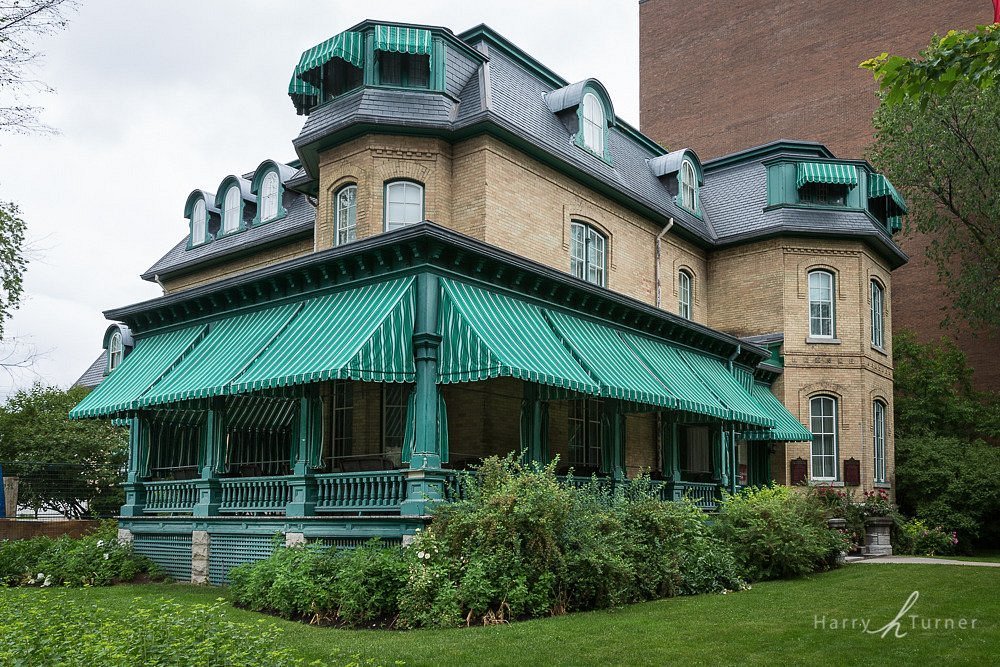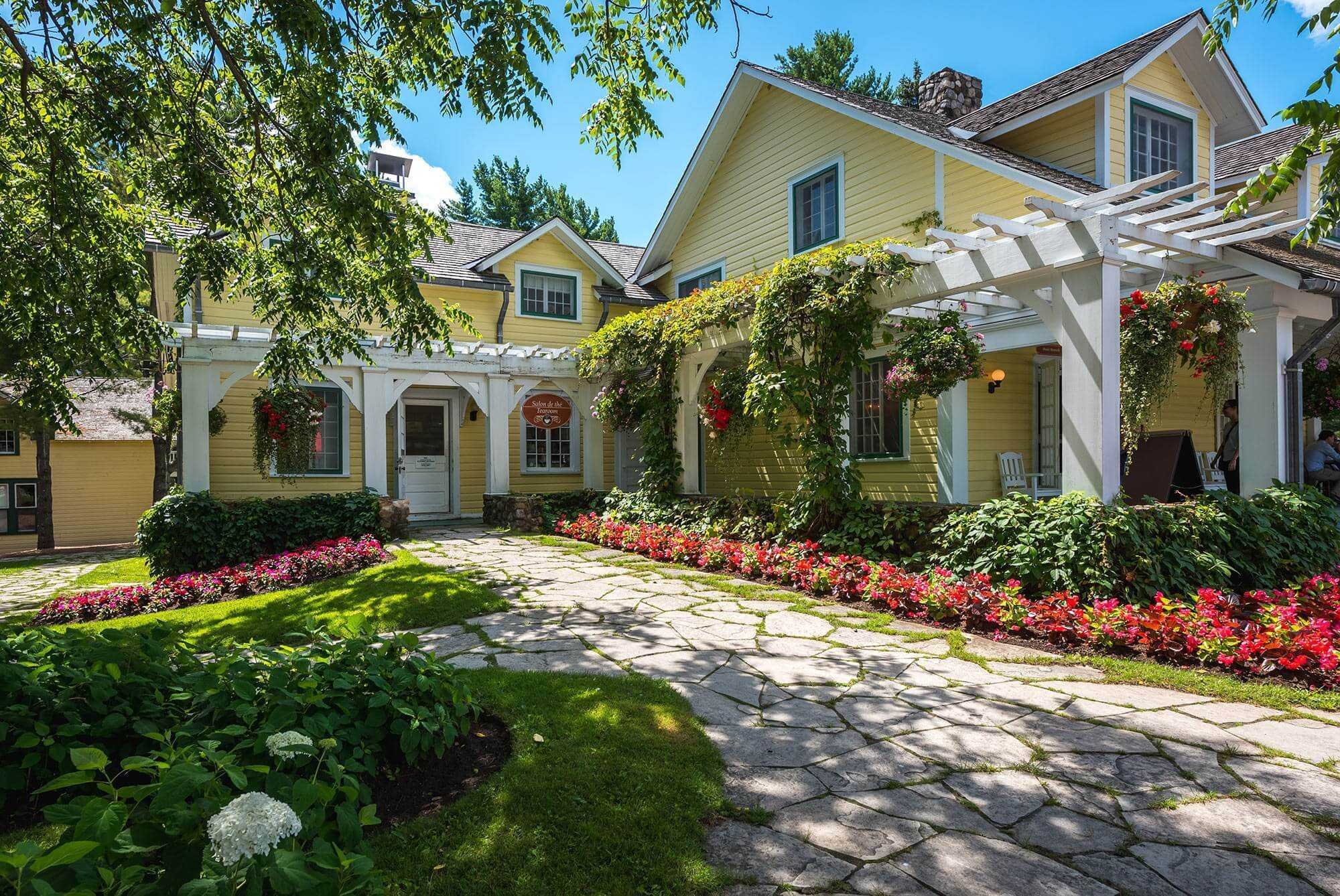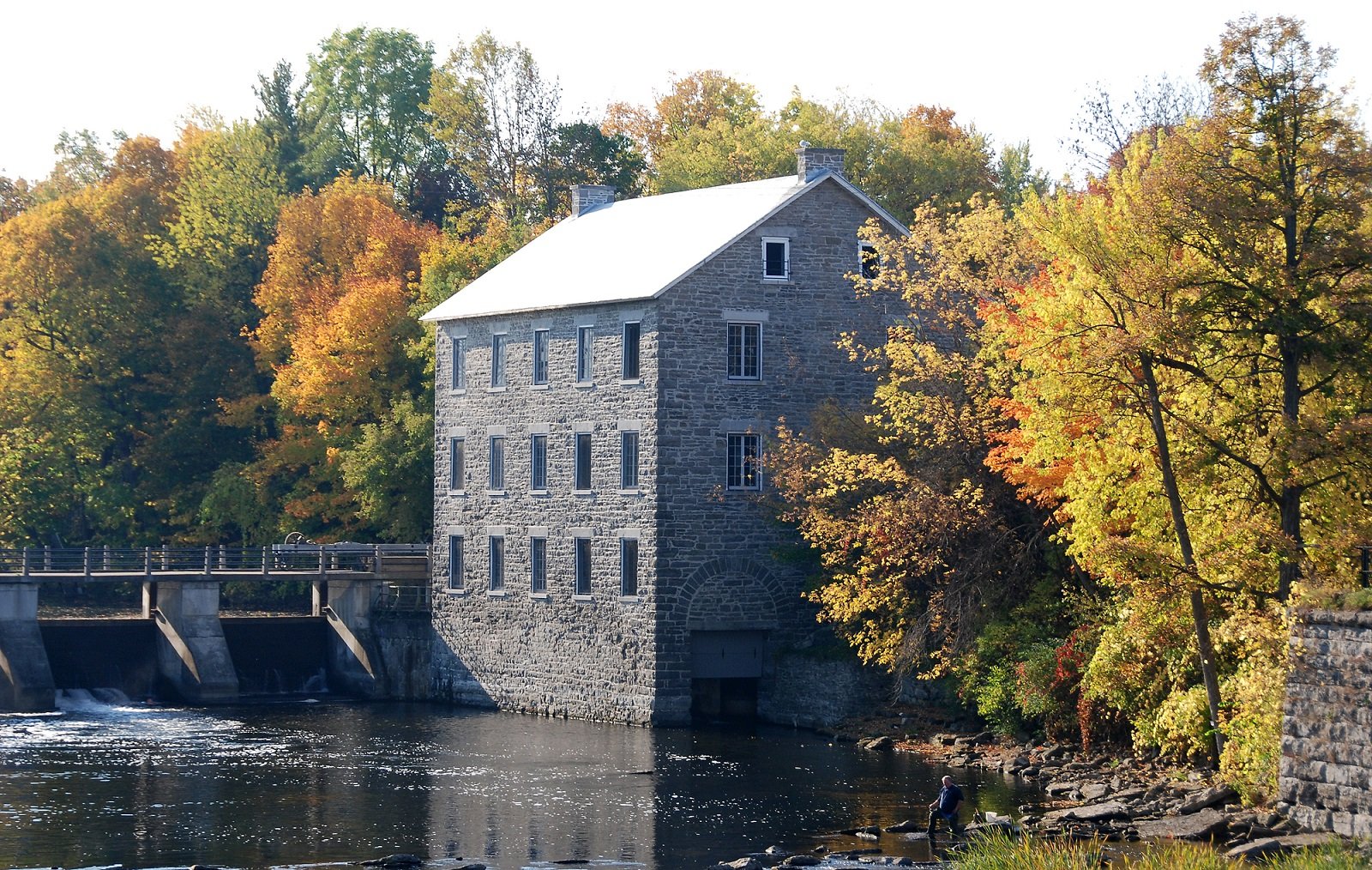Exploring Ottawa's Historical Homes and Their Stories
When we explore Ottawa's history, the city's historical homes become majestic landmarks, filled with fascinating stories waiting to be uncovered. Join us on an exciting journey as we explore the rich narratives woven into these iconic buildings that played important roles in shaping Canada's capital city.
Laurier House National Historic Site: Where Politics and Legacy Meet
In the heart of Sandy Hill, the Laurier House National Historic Site invites us in with its timeless charm. It was once home to two Canadian Prime Ministers, Sir Wilfrid Laurier and William Lyon Mackenzie King. This grand building witnessed important political decisions and discussions. As we step into its beautiful rooms, we can almost hear the debates and discussions that shaped our nation's history.
Laurier House holds the unique distinction of being the former residence of not one but two Canadian Prime Ministers. Sir Wilfrid Laurier, Canada's seventh Prime Minister, resided in the house from 1897 to 1919. After Laurier's passing, William Lyon Mackenzie King, the country's tenth Prime Minister, lived in the same house from 1923 to 1948. It is the only residence in Canadian history to have housed two different Prime Ministers.
William Lyon Mackenzie King was known to be a superstitious man, and he believed that the number 7 brought him good luck. During his time at Laurier House, he made several alterations to the property, ensuring that various elements had a connection to the number 7. For instance, he installed a 7th step on the main staircase and adorned the property with 7-leaf clovers. He even went as far as modifying the year on a clock to show the number 7 in Roman numerals (1907 instead of 1903). This quirky fascination with the number 7 has become a charming and well-known aspect of Laurier House.
Aside from its political significance, Laurier House also has a unique connection to Canada's beloved sport, hockey. Sir Wilfrid Laurier was an avid supporter of ice hockey and played a significant role in securing Canada's participation in the inaugural 1908 Olympic Games in London. He even donated the now-famous Stanley Cup to be awarded to the top Canadian hockey team. Today, a display at the Laurier House National Historic Site honours this historical connection to the world of hockey, further enriching the site's cultural significance.
Image Credit: Harry Turner
Fairmont Château Laurier: An Elegant Legacy of Luxury
Located along the picturesque Rideau Canal, the Fairmont Château Laurier is a stunning example of Ottawa's luxury and grandeur. For over a century, it has hosted royalty, dignitaries, and celebrities, witnessing thrilling stories of espionage, lavish parties, and important negotiations.
The Fairmont Château Laurier's iconic architecture is often a subject of fascination and mystery. The hotel's design was influenced by the French château style, which gives it a distinctive fairytale appearance. However, there is a fascinating twist in the tale of its design. It is said that the architect, Bradford Gilbert, never actually visited Ottawa during the construction of the hotel. Instead, he relied on photographs and drawings to create the plans. As a result, the Fairmont Château Laurier's design bears a striking resemblance to several other buildings, particularly the Château de Chambord in France.
The hotel's construction was not without its challenges. The Château Laurier was built on an uneven landscape, which posed significant difficulties during its construction. To ensure stability and support for the structure, the foundation had to be reinforced with over 9,000 wooden piles. The construction process was so delicate that a special train filled with earth and rocks was brought in to help stabilize the foundation. Today, the hotel stands tall as a testament to engineering ingenuity and perseverance.
The Fairmont Château Laurier has a long history of hosting royalty and dignitaries from around the world. In 1939, King George VI and Queen Elizabeth of the United Kingdom stayed at the hotel during their Royal Tour of Canada. To honour their visit, the hotel's management arranged for the construction of a special suite for the royal couple. Since then, the suite has been named the "Royal Suite" and has been used to accommodate various other dignitaries and heads of state visiting Ottawa.
Copyright: Michel Rathwell
Billings Estate National Historic Site: Tracing Ottawa's Pioneers
Taking us back to the early 19th century, the Billings Estate National Historic Site embodies the pioneering spirit of Ottawa's early days. Once home to the Billings family, it started as a simple homestead and evolved into a bustling farm. As we explore the well-preserved buildings and lush grounds, we connect with the determination and resilience of Ottawa's earliest settlers, who laid the foundation for the city we know today.
The Billings Estate holds a special place in Ottawa's history as it was once home to the prominent Billings family, known for their pioneering spirit and innovative contributions. Braddish Billings, the patriarch of the family, was not only a successful businessman and politician but also an inventor. He held several patents, including one for a steam-driven foghorn, which played a crucial role in marine safety. This historical site is a testament to the ingenuity and forward-thinking mindset of Ottawa's early settlers.
Billings Estate has garnered a reputation for being haunted, attracting visitors interested in the paranormal. Over the years, various ghostly encounters and mysterious occurrences have been reported by staff and visitors alike. Some claim to have heard unexplained footsteps, while others have seen flickering lights or experienced cold spots. The site has even been featured in television shows and books exploring ghost stories and haunted places in Canada. Whether you believe in ghosts or not, these eerie tales add an element of intrigue to the site's already rich history.
The Billings Estate National Historic Site offers visitors a unique opportunity to step back in time and experience life on a 19th-century farmstead. The estate features a fully restored heritage barn, gardens, and farm animals, providing a glimpse into the daily lives of the Billings family and early settlers. Visitors can interact with friendly farm animals, such as sheep and chickens, and learn about traditional farming practices and agricultural heritage.
Mackenzie King Estate: Where Tranquility Meets Politics
Nestled in Gatineau Park, the Mackenzie King Estate offers a peaceful escape from the city. It was the private refuge of Canada's longest-serving Prime Minister, William Lyon Mackenzie King. Surrounded by beautiful woodlands and gardens, King found solace and inspiration in nature. A visit to his cherished estate gives us a glimpse into the personal life of this enigmatic leader and his deep love for the natural world.
William Lyon Mackenzie King, Canada's longest-serving Prime Minister, had a deep interest in spiritualism and the paranormal. He believed in communicating with the spirits of the deceased, including his late mother and several historical figures. It is said that King conducted séances at the Mackenzie King Estate, attempting to communicate with these spirits. He kept detailed records of these séances and claimed to have received guidance from the spirit world in making political decisions. His interest in spiritualism and the occult adds a fascinating and somewhat mystical dimension to the estate's history.
Mackenzie King Estate was not only a place of political contemplation for King but also a sanctuary for him to indulge in his love for dogs. King was an avid dog lover and had several pets during his time at the estate. He often took long walks around the grounds with his dogs, enjoying the serene beauty of the surroundings. Today, the estate remains a favourite destination for dog owners, offering a picturesque setting for dog walking and enjoying nature, just as King did.
On the grounds of the Mackenzie King Estate, you will find the picturesque "Ruins of the Abbey." These ruins are not remnants of some ancient structure but were actually constructed by King himself. Inspired by his travels in Europe, especially his visit to the ruins of Melrose Abbey in Scotland, King had the ruins built as a whimsical addition to the landscape. The ruins, although not authentic, have become a popular spot for visitors to explore and take photographs, adding an intriguing architectural touch to the estate.
Image Credit: National Capital Commission
The Bytown Museum: Unearthing Ottawa's Origins
Our journey takes us to the Bytown Museum, located in the Commissariat, the city's oldest stone building. This historical treasure trove captures the energy and struggles of Bytown's early days, especially during the construction of the Rideau Canal. Here, we discover the tenacity of early settlers and the vibrant cultural tapestry that formed the foundation of modern Ottawa.
The Bytown Museum holds the distinction of being the oldest stone building in Ottawa. It was originally built in 1827 as a commissariat for the construction of the Rideau Canal. The canal was a significant engineering feat and an essential waterway for trade and transportation in the 19th century. The museum's location on the banks of the Rideau Canal provides a picturesque setting that combines history and natural beauty.
Before becoming a museum, the building served as the official residence of the Governor of Canada. In the mid-19th century, when Ottawa was known as Bytown, the building was home to several Governors and their families. It hosted various dignitaries and important events during this period. Today, visitors can explore the museum's exhibits and imagine the grandeur of its past as a residence for high-ranking officials.
In 1996, during a restoration project, workers at The Bytown Museum made an exciting discovery - a time capsule buried under the cornerstone of the building. The capsule contained several historic items, including newspapers, coins, photographs, and documents dating back to the mid-19th century. The artifacts provide a glimpse into life during that era and have been carefully preserved and displayed at the museum, offering a direct link to its own history.
Image Credit: Ottawa Tourism
The Sussex Drive Mansions: Elegant Diplomatic Marvels
A leisurely walk along the prestigious Sussex Drive reveals awe-inspiring mansions, serving as diplomatic residences. Beyond their grand architecture and manicured landscapes, these historic homes witnessed countless diplomatic affairs and international events, shaping Canada's global relations.
Sussex Drive is renowned for housing many of Ottawa's official residences for foreign ambassadors and high commissioners. These elegant mansions are not only beautiful architectural landmarks but also important centers for international diplomacy. The street's prestigious address has made it a sought-after location for diplomats representing their countries in Canada. As you stroll along Sussex Drive, you can catch glimpses of the various national flags adorning these magnificent residences, showcasing the global significance of this iconic street.
Secret Tunnels and Bunkers: The Sussex Drive Mansions have an intriguing history that includes rumours of secret tunnels and bunkers. It is said that during the Cold War, some of the residences were equipped with hidden passages and secure underground spaces to protect diplomats in the event of emergencies or security threats. While the specifics of these tunnels remain largely shrouded in mystery, the notion adds an air of intrigue to the already distinguished homes.
Home to Distinguished Guests: Over the years, the Sussex Drive Mansions have played host to a wide array of distinguished guests and important events. From state dinners and receptions to meetings between world leaders, these residences have witnessed moments of significant international importance. The impressive architecture and grandeur of these mansions provide the perfect backdrop for diplomatic discussions and high-level gatherings, leaving a lasting impression on all who visit.
Image Credit: CBC
The Watson Mill: A Glimpse into Ottawa's Industrial Past
Venturing into Manotick, we uncover the Watson Mill, a historic gem that sheds light on Ottawa's industrial heritage. Built-in the 1860s, this charming mill was once a bustling center of activity, grinding grain and sawing lumber for the local community. As we explore its weathered beams and creaky machinery, we get a sense of the hardworking spirit that shaped the region during its early years.
Watson's Mill is not just a historical landmark; it is a fully functioning flour mill to this day. The mill was originally built in 1860 by Moss Kent Dickinson, a prominent businessman in the region. It was strategically located on the banks of the Rideau River in Manotick to take advantage of the water's power for milling. Today, the mill continues to produce stone-ground flour using traditional milling techniques, providing visitors with a unique opportunity to witness the process of grinding grains just as it was done in the 19th century.
Like many historic buildings, Watson's Mill has its share of ghost stories and haunted legends. Over the years, several visitors and staff members have reported eerie experiences and unexplained occurrences within the mill. From inexplicable footsteps to mysterious lights, these stories have added a touch of mystery and intrigue to the mill's history. Ghost tours and Halloween events at Watson's Mill have become popular attractions, delighting those who seek a bit of spooky excitement.
Watson's Mill has faced several challenges throughout its history but has managed to survive and thrive despite adversity. In 1916, a devastating fire destroyed much of the mill, leaving only the stone walls intact. However, the mill was rebuilt, and the original stone walls were incorporated into the new structure. More recently, in 1973, a flood caused significant damage to the mill, but once again, it was restored and reopened to the public. Today, Watson's Mill stands as a testament to resilience and perseverance, reminding us of the strength of historical preservation.
Photo Credit: Watsonsmill.com
From political hubs to rustic mills and living history museums, Ottawa's historical homes paint a vivid picture of the city's past. Each edifice offers a unique story that enriches our understanding of the people, events, and eras that have shaped Canada's capital. So, as you embark on your journey through Ottawa, let the echoes of history guide you as you explore the captivating narratives that lie within the walls of these extraordinary landmarks. Step back in time and immerse yourself in the fascinating stories of Ottawa's historical homes.








